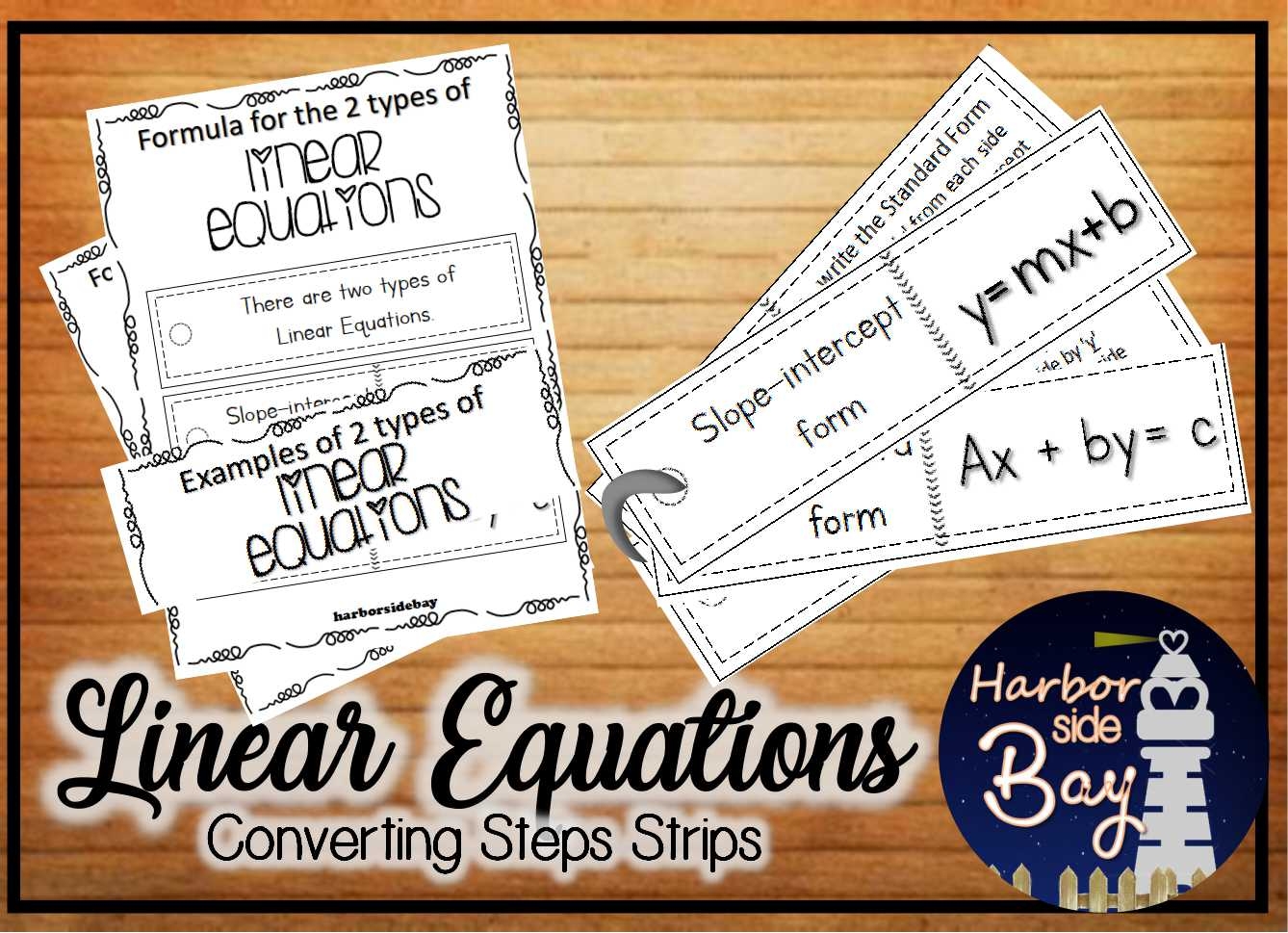When working with linear equations, it is important to be able to convert between different forms of equations. One common conversion is from standard form to slope intercept form. Standard form is written as Ax + By = C, while slope intercept form is written as y = mx + b. This conversion is useful because slope intercept form allows us to easily identify the slope and y-intercept of a line.
One way to practice this conversion is through worksheets that provide equations in standard form and ask students to rewrite them in slope intercept form. These worksheets can help reinforce the concept and improve understanding of linear equations.
Example Worksheet:
1. 2x – 3y = 6
2. -4x + 5y = -10
3. 3x + 4y = 12
4. -2x – y = 5
5. 6x – 2y = 8
When converting from standard form to slope intercept form, the goal is to isolate y on one side of the equation. This involves manipulating the equation using algebraic operations such as addition, subtraction, multiplication, and division. By following a series of steps, students can rewrite the equation in slope intercept form.
For example, to convert the equation 2x – 3y = 6 to slope intercept form, we would first subtract 2x from both sides to get -3y = -2x + 6. Then, we would divide by -3 to isolate y, resulting in y = 2/3x – 2. This process may seem complicated at first, but with practice, it becomes easier and more intuitive.
Worksheets that provide multiple examples of standard form to slope intercept form conversions can help students build confidence in their algebra skills. By practicing these conversions, students can improve their ability to manipulate equations and understand the relationship between different forms of linear equations.
In conclusion, standard form to slope intercept form worksheets are a valuable tool for reinforcing the conversion process and improving understanding of linear equations. By practicing these conversions, students can sharpen their algebra skills and gain a deeper appreciation for the relationships between different forms of equations.
